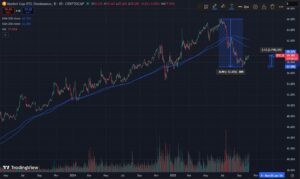Will September Nonfarm Payrolls data be released this Friday?

The United States’ (US) federal government has officially shut down for the first time in six years after lawmakers failed to come to an agreement on the funding bill by the September 30 midnight deadline.
Some federal agencies in charge of collecting and publishing macroeconomic data, including the Bureau of Labor Statistics, the Bureau of Economic Analysis and the Census Bureau, halted operations until the funding is restored. As a result, several data releases, including the weekly Initial Jobless Claims and Factory Orders, got already postponed. Friday’s official employment report for September, which features Nonfarm Payrolls, Unemployment Rate and wage inflation figures, will not be released either.
Below is a list of upcoming macroeconomic data that will either be released as scheduled or has the potential to be delayed.
|
Release Date |
Release time (GMT) |
Indicator |
Source |
Possibly Delayed? |
|---|---|---|---|---|
|
October 3 |
12:30 |
September Nonfarm Payrolls |
Bureau of Labor Statistics |
Yes |
|
October 3 |
13:45 |
September S&P Global Services PMI |
S&P Global |
No |
|
October 3 |
14:00 |
September ISM Services PMI |
Institute for Supply Management |
No |
|
October 6 |
14:00 |
September Employment Trends Index |
Conference Board |
Yes |
|
October 7 |
12:30 |
August Trade Balance |
Bureau of Economic Analysis |
Yes |
|
October 7 |
12:55 |
Weekly Redbook Index |
Redbook Research Inc. |
No |
|
October 7 |
14:00 |
October TIPP Economic Optimism |
TechnoMetrica Institute of Policy and Politics |
No |
|
October 7 |
19:00 |
August Consumer Credit Change |
Federal Reserve |
No |
|
October 8 |
11:00 |
Weekly MBA Mortgage Applications |
Mortgage Bankers Association |
No |
|
October 8 |
18:00 |
Minutes of the FOMC September meeting |
Federal Reserve |
No |
|
October 9 |
12:30 |
Weekly Initial Jobless Claims |
Department of Labor |
Yes |
Nonfarm Payrolls FAQs
Nonfarm Payrolls (NFP) are part of the US Bureau of Labor Statistics monthly jobs report. The Nonfarm Payrolls component specifically measures the change in the number of people employed in the US during the previous month, excluding the farming industry.
The Nonfarm Payrolls figure can influence the decisions of the Federal Reserve by providing a measure of how successfully the Fed is meeting its mandate of fostering full employment and 2% inflation.
A relatively high NFP figure means more people are in employment, earning more money and therefore probably spending more. A relatively low Nonfarm Payrolls’ result, on the either hand, could mean people are struggling to find work.
The Fed will typically raise interest rates to combat high inflation triggered by low unemployment, and lower them to stimulate a stagnant labor market.
Nonfarm Payrolls generally have a positive correlation with the US Dollar. This means when payrolls’ figures come out higher-than-expected the USD tends to rally and vice versa when they are lower.
NFPs influence the US Dollar by virtue of their impact on inflation, monetary policy expectations and interest rates. A higher NFP usually means the Federal Reserve will be more tight in its monetary policy, supporting the USD.
Nonfarm Payrolls are generally negatively-correlated with the price of Gold. This means a higher-than-expected payrolls’ figure will have a depressing effect on the Gold price and vice versa.
Higher NFP generally has a positive effect on the value of the USD, and like most major commodities Gold is priced in US Dollars. If the USD gains in value, therefore, it requires less Dollars to buy an ounce of Gold.
Also, higher interest rates (typically helped higher NFPs) also lessen the attractiveness of Gold as an investment compared to staying in cash, where the money will at least earn interest.
Nonfarm Payrolls is only one component within a bigger jobs report and it can be overshadowed by the other components.
At times, when NFP come out higher-than-forecast, but the Average Weekly Earnings is lower than expected, the market has ignored the potentially inflationary effect of the headline result and interpreted the fall in earnings as deflationary.
The Participation Rate and the Average Weekly Hours components can also influence the market reaction, but only in seldom events like the “Great Resignation” or the Global Financial Crisis.




